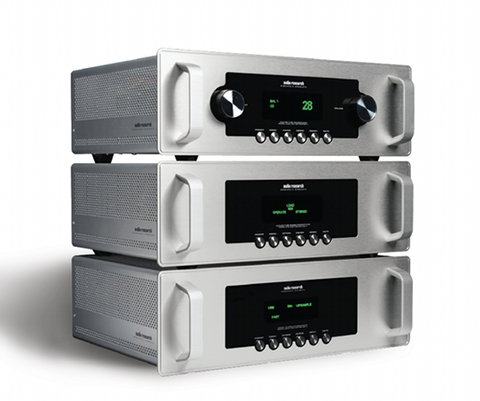about Audio, High Fidelity
& Home Entertainment technologies
pid: 607-2025/10/01 (v1.2)
Privacy Policy

Source: Press Release, Last Accessed: 2016/05/05
Audio Research recently unveiled the Foundation Series, a family of vacuum tube components which has been created “to provide the most natural musical experience”. Design and engineering comes from the same team responsible for the award-winning Reference Series.
The first three components include the LS28 line stage preamplifier, the PH9 phono stage, and the DAC9 digital-to-analog converter. A new amplifier will follow, with other products to complete the series. All models will be available in both black and natural anodized aluminum finishes. Each unit comes with its own custom metal remote control.
The LS28 line stage features four balanced and four single-ended inputs, and two sets of both balanced and single ended outputs. The straightforward menu allows control of numerous parameters, including input naming, tube hours, auto shutdown, and home theater pass-through. Phase inversion and mono mode are also standard functions. At the heart of the LS28 are four 6H30 vacuum tubes in the analog circuit.
The PH9 phono preamplifier is based on a trio of 6H30 vacuum tubes which form a simple and clear signal path and, also, offers five different impedance settings to allow for cartridge loading, which can be changed on the fly with the included metal remote. Cartridge impedance, tube hours, auto shutdown, and other features are included in the menu system.
The DAC9 digital-to-analog converter decodes most current formats with state-of-the-art vacuum tube technology. Five digital connections -USB, RCA, BNC, AES/EBU, and Toslink- provide connectivity to all of your digital sources. Quad DAC architecture provides a balanced digital signal, wide dynamic range, and decoding resolutions from red book CD up to 384 kHz and native DSD sampling rates. A pair of 6H30 vacuum tubes are the heart of the analog circuit. Both balanced and single-ended connectors are provided for output connectivity. Native-rate upsampling and selectable digital filters allow customization of the digital signal.
For more information: http://www.audioresearch.com/

